
| What is Flavor and Fortune? |
| How do I subscribe? |
| How do I get past issues? |
| How do I advertise? |
| How do I contact the editor? |
Read 12914657 times
Connect me to:
| Home |
| Articles |
| Book reviews |
| Letters to the Editor |
| Newmans News and Notes |
| Recipes |
| Restaurant reviews |
| Article Index (all years, slow) |
| List of Article Years |
| Article Index (2025) |
| Article Index (last 2 years) |
| Things others say |
| Related Links |
| Log In... |
| Authors |
| Categories & Topics |
A California Family of Restauranteurs
| by Teresa M. Chen |
Personal Perspectives
Winter Volume: 2010 Issue: 17(4) page(s): 12, 13, and 14
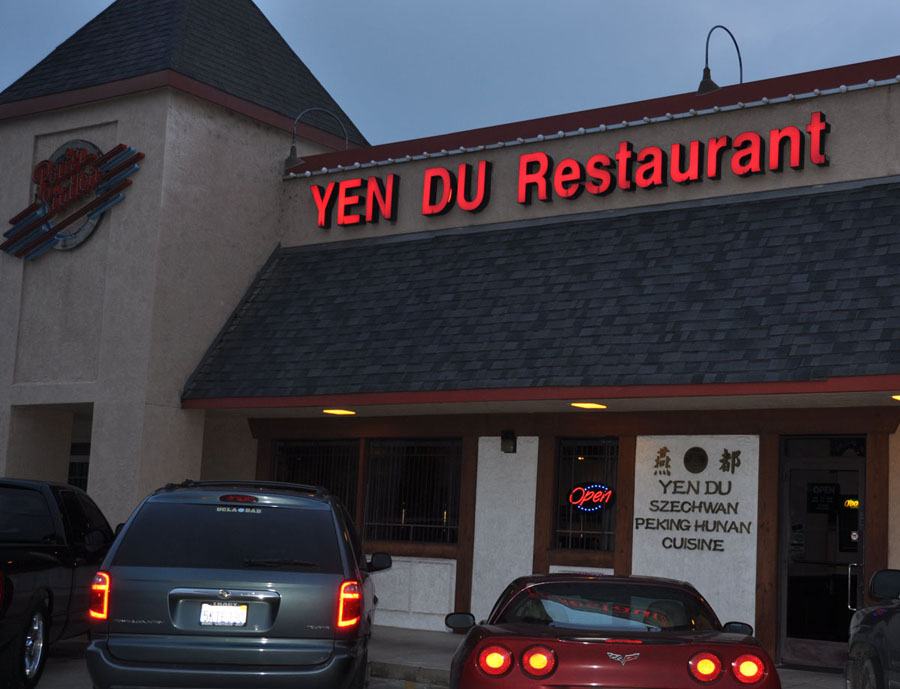
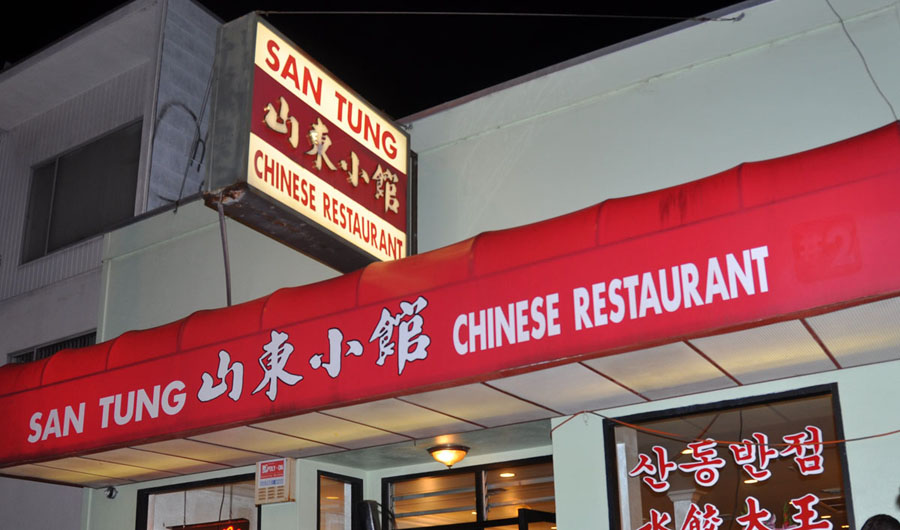 The evolvement of Chinese regional cuisine outside of China is closely linked to the migration of people from their various regions. Every stop along the way adds twists to the flavors they bring, what they eat, and what they prepare as restauranteurs. This sweeping statement can best be illustrated by Shandong cooking in the United States, specifically that of chefs in the Ju family, some of whom spell their name Chu.
The evolvement of Chinese regional cuisine outside of China is closely linked to the migration of people from their various regions. Every stop along the way adds twists to the flavors they bring, what they eat, and what they prepare as restauranteurs. This sweeping statement can best be illustrated by Shandong cooking in the United States, specifically that of chefs in the Ju family, some of whom spell their name Chu.
One specific Ju family has restaurants in California in the cities of Stockton and Lodi including the Yen Ching of Lodi, the New Yen Ching (the original one), and King Tsin of Lodi, also Yen Du. Extended family restaurants include Tsing Tao in Stockton and San Tung in San Francisco. And, there are more outside of California.
Shandong cooking is an integral part of northern Chinese cooking. Many a cook in the imperial capital of Beijing hailed from Shandong. Perhaps this cuisine was highly respected in part due to the influence of Confucius, the political philosopher who was an epicurean extraordinaire, and the descendents of his Kong household. More importantly, for young boys escaping famine and hunger, it was the only way to get a meal while doing menial work as kitchen hands in restaurants. They were not simply apprentices. The bright and initiated managed to learn or steal the master's art on the job.
FROM SHANDONG TO KOREA: From age twelve and beyond, Ju Kin Fo worked at many restaurants in Shandong, in Manchuria, and in Korea until he, at the age of 35 opened his own in Pusan. This was a city with a good-size Chinese population and most of them were from Shandong. Naturally, his children all helped out in his restaurant after school. At first it was Shan Guo (Steve), Shan Min (Bill), and Shan Jia (Denny). Then in due time, Shan Le (Billy), Shan Lih (Jack), and Shan Long (Tommy) joined his work force. So did Shan Zhi (Sandy), their only daughter at the time.
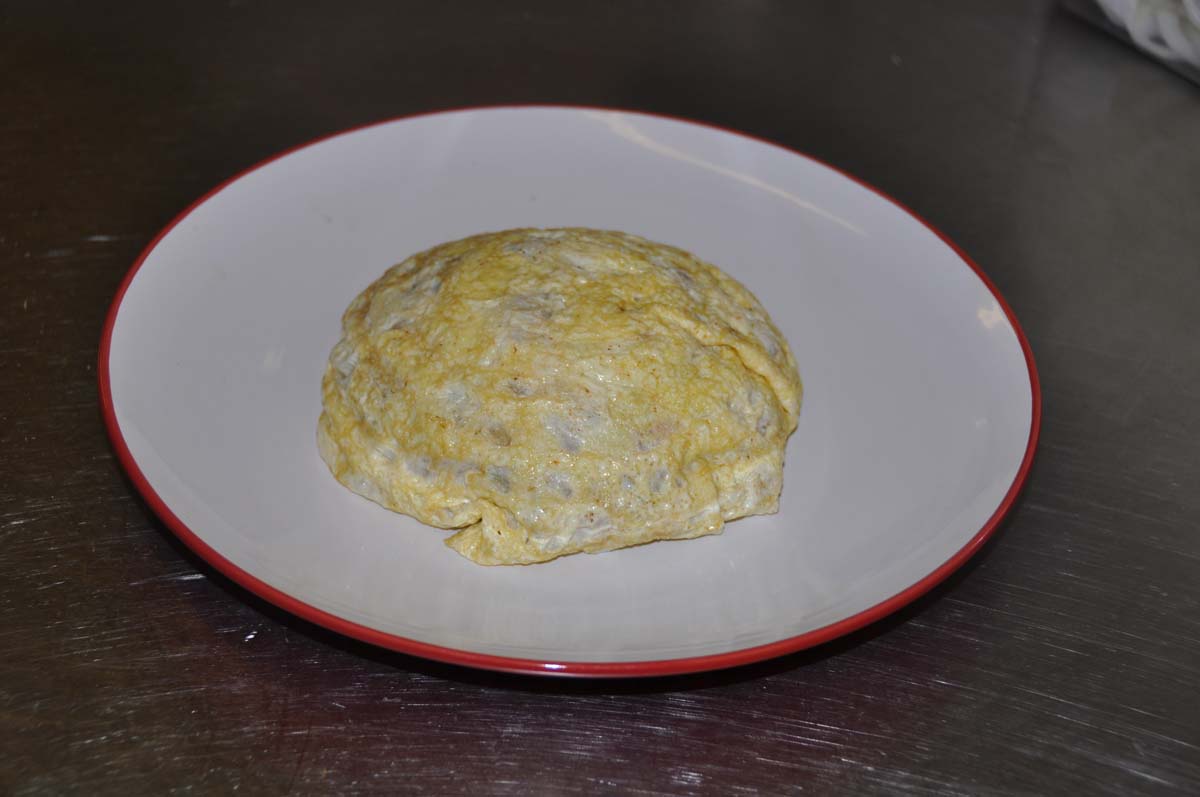
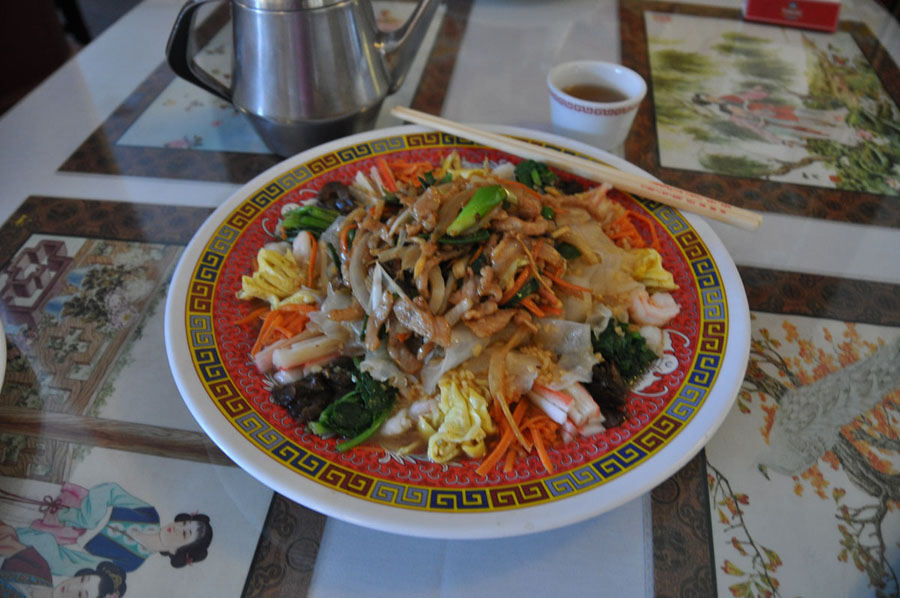 FROM KOREA TO THE UNITED STATES: Chef Ju decided to move to the United States in 1975. He was sponsored by a cousin already in the restaurant business in California. He and his wife immigrated with six of their seven children. Number Two son Bill had already gone on to Japan. In 1978, Chef Ju opened the first northern-style restaurant in Stockton, California. Like others of northern-style, it was called Mandarin. There were restaurants in the Bay Area and elsewhere in the United States, but his menu incorporated spicy Sichuan and Hunan dishes. These had already become popular. They pleased the American palate in the decades after World War Two. These restaurants formed the counterpart of typical Chinese-American chop suey, chow mein, barbecued spareribs, wonton soup, and egg rolls that were known since Gold Rush days.
FROM KOREA TO THE UNITED STATES: Chef Ju decided to move to the United States in 1975. He was sponsored by a cousin already in the restaurant business in California. He and his wife immigrated with six of their seven children. Number Two son Bill had already gone on to Japan. In 1978, Chef Ju opened the first northern-style restaurant in Stockton, California. Like others of northern-style, it was called Mandarin. There were restaurants in the Bay Area and elsewhere in the United States, but his menu incorporated spicy Sichuan and Hunan dishes. These had already become popular. They pleased the American palate in the decades after World War Two. These restaurants formed the counterpart of typical Chinese-American chop suey, chow mein, barbecued spareribs, wonton soup, and egg rolls that were known since Gold Rush days.
Chef Ju further enhanced the repertoire of spicy food with his own Korean kimchee. At the same time, he upheld the standard of traditional Shandong cooking making fresh pasta dishes daily including pot stickers, buns, and noodles that he believed Marco Polo and the Empress Dowager would approve of.
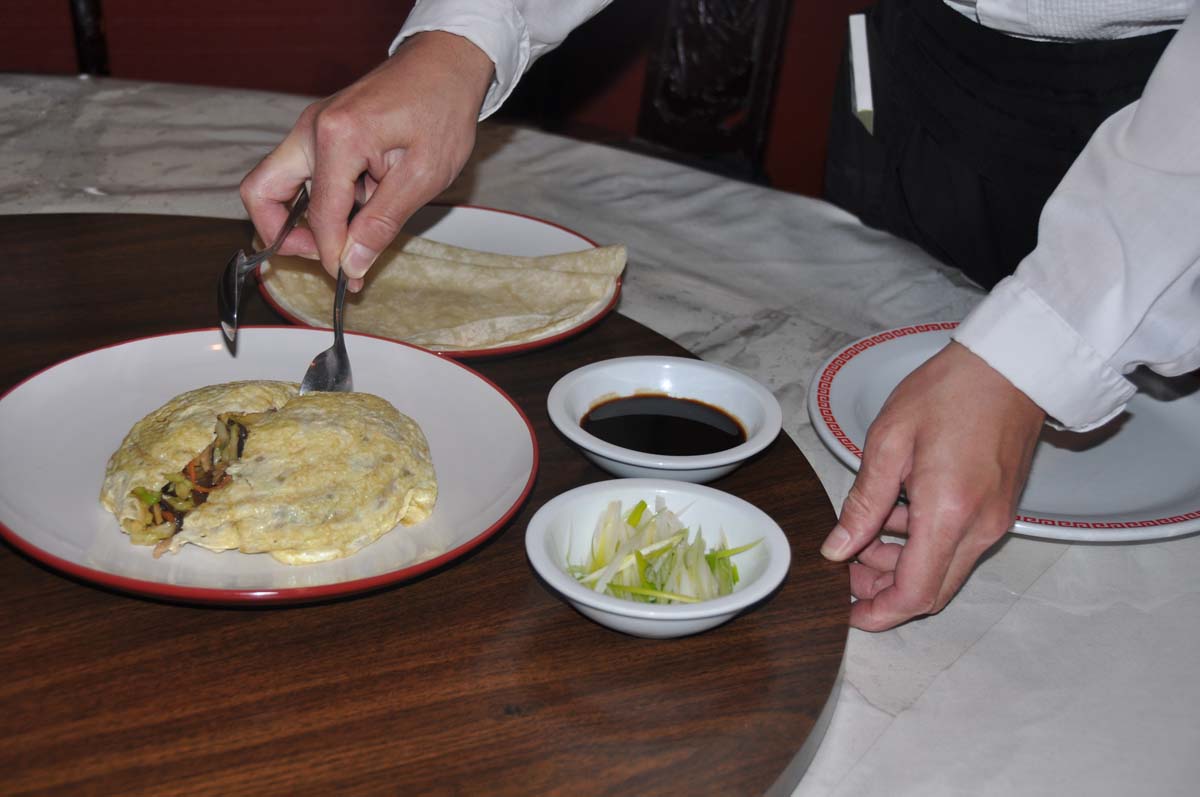 MAKING ANOTHER GENERATION OF CHEFS: Chef Ju believed in the old-fashioned way of grooming good chefs. He started them out at the bottom, taking out the garbage, washing the floors, doing the dishes, and scrubbing the pots and pans. These they did long before they got to touch the food. He also sent his sons out to work in other Chinese restaurants. According to Denny, his Number Three son, there were benefits from this approach. Denny said he got to experience other chefs and other restaurants. He was so eager to learn that at one point in his young life, he actually worked in Southern California, Oregon, Washington, Georgia, and in Michigan. These were short stints of a year or so until the seemingly rolling stone gathered enough ‘moss’ that what he learned became his own.
MAKING ANOTHER GENERATION OF CHEFS: Chef Ju believed in the old-fashioned way of grooming good chefs. He started them out at the bottom, taking out the garbage, washing the floors, doing the dishes, and scrubbing the pots and pans. These they did long before they got to touch the food. He also sent his sons out to work in other Chinese restaurants. According to Denny, his Number Three son, there were benefits from this approach. Denny said he got to experience other chefs and other restaurants. He was so eager to learn that at one point in his young life, he actually worked in Southern California, Oregon, Washington, Georgia, and in Michigan. These were short stints of a year or so until the seemingly rolling stone gathered enough ‘moss’ that what he learned became his own.
As a result of his many experiences, Denny was able to create his own yu xiang sauce for fresh scallops as well as a gan shao sauce for Shandong chicken. Freedom came after many years of discipline and hard work. Together, Father and sons created many signature dishes that were copied by other restauranteurs. Besides made-to-order pot-stickers and noodles, their Hot and Sour Soup, Dried Braised String Beans, and Walnut Prawns, to name just three, were and still are unsurpassed. The twangy mustard sauce for the mung bean noodle salad in the Yin-Yang Duo (liang zhang pi) and for the jelly fish salad was Chef Ju Kin Fo’s creation.
CHINESE RESTAURANT FOR HUNTERS: Because the second-generation of Ju brothers love to go deep sea fishing and dive for abalone, and that they like to hunt wild game, they got to know many local hunters and anglers. The rules and regulations of the Department of Fish and Game prohibit the sale of wild catch, so unlike in China, there are no restaurants in the United States specializing in the cuisine of wild game. But hunters in the area would bring their catch to the flagship Yen Ching Restaurant at Lincoln Center and ask the hunter-chefs to fix them a feast.
Chefs Denny, Jack, and Tommy together developed special techniques to treat tough game meat. They found creative ways to prepare wild catch, and they did this as a service to their fellow hunters. None of the wild game was available to the public. Hunters like Mark Mintiens would return year after year to Yen Ching with his supply of wild ducks and wild geese, even venison, boar, and/or buffalo. He and his guests could then enjoy a nine-course feast, a rare treat once reserved for royalty and Mandarins in the old days.
SECRET OF THIS CHEF'S SUCCESS: Chef Ju's success is no secret to immigrant families who left war and famine behind to seek a better life in a foreign country. It just required courage and determination. Having a close-knit family respecting hierarchy, harmony, and hard work under Confucian persuasion was the cornerstone of their business. It amazes many that their six restaurants in San Joaquin County all do well, even though their menus feature similar cooking styles. They do well because all of them serve good food at reasonable prices with great courtesy; other marks of Chef Ju training.
For those that hunt and fish, some of their recipes follow, for others who may be in the area and simply want to try one or all of the Ju Family food facilities, do go to one or more of their restaurants. They are:
YEN CHING MANDARIN at 1110 W. Kettleman Lane in Lodi CA 95240; (209) 334-2002
PEKING RESTAURANT at 7555 Pacific Avenue in Stockton CA 95207; (209) 957-0617
NEW YEN CHING at 6511 Pacific Avenue in Stockton CA 95207; (209) 957-0913
KING TSIN at 121 S. School Street in Lodi CA 95240; (209) 334-0599
YEN DU at 702 Porter Avenue in Stockton CA 95207; (209) 951-3748
TSING TAO at 2339 W.Hammer Lane in Stockton CA 95209; (209) 475-9688, and
SAN TUNG at 1031 Irving Street in San Francisco CA 94122; (415) 242-0828
| Hooded Combo by Chef Bill of Peking Restaurant |
|---|
2 eggs 8 ounces cabbage, finely shredded; or yellow chives or garlic chives which are preferred by Shandong people 1 ounce black wood ear fungi, soaked until soft, then finely shredded 1 ounce bamboo shoot, cut into fine strips 1 ounce carrot, finely shredded 4 ounces pork, cut into fine strips 1 Tablespoon vegetable oil Sauce: 1 Tablespoon soy sauce 1/4 teaspoon sugar Dash ground white pepper 1/2 teaspoon sesame oil Condiments: 2 ounces Hoisin sauce 2 ounces shredded scallion 4 crepes, as used in Mu Xu dishes Preparation: 1. Beat the eggs and pour enough into a pre-heated eight-inch nonstick pan just to coat the pan. Cook until a thin, even, round layer is set. Remove and repeat until all crepes are made. 2. Place the egg crepe in a six-inch bowl, allowing some of the edge to remain outside of the bowl. Then mix ingredients for sauce and set aside temporarily. 3. Heat wok, add oil then add cabbage, wood ear fungi, bamboo shoots, carrots, and pork and stir-fry for three minutes before adding the sauce and stir-frying another two minutes before removing the wok from heat source. 4. Using a spatula, transfer the mixture onto the egg sheet-covered bowl, and fold edges inward. Cover the bowl with a bigger plate and flip it over, removing the bowl and then the stir-fry combo is covered with a hood. Note: The hoisin sauce and finely shredded scallions are available condiments for this Shandong dish. The hood is then cut into and the contents eaten rolled up in a piece of a crepe. |
| Yin-Yang Duo by Chefs Denny and Jack of New Yen Ch |
|---|
2 dried mung bean sheets (about ounce and a half), soaked in hot water for half an hour, then cut into one-inch wide strips 1 medium size carrot, peeled and shredded 1/2 pound spinach, blanched and cut into two-inch sections 1 egg, beaten, fried into a thin sheet, cooled, then finely shredded 8 large shrimp, shells and veins removed and discarded, then cooked 2 squid, cleaned, cooked and cut into thin strips 2 pieces imitation crab legs, shredded 8 dried Chinese black mushrooms, soaked, stems removed, then simmered and cut into thin strips Chef Ju Kin Fo's Salad Dressing ingredients: 2 ounces Chinese mustard powder 2 ounces cold water 2 ounces white vinegar 1 ounce soy sauce 4 ounces sugar Preparation: 1. Put Chinese mustard powder in a bowl, add water and mix into a smooth paste. 2.Then add other ingredients and stir well. Ingredients for the stir-fry: 4 ounces pork, cut into thin strips 2 scallions, cut into 2-inch sections 1/2 onion, finely sliced 2 ounces shredded carrot 1 Tablespoon vegetable oil Ingredients for the sauce: 1 Tablespoon soy sauce 1/4 teaspoon sugar Dash ground white pepper 1/4 teaspoon sesame seed oil 1/4 teaspoon minced garlic Final preparation for the salad: 1. Arrange cut mung bean sheets in the middle of a big platter, covering about three quarters of the bottom. 2. Divide the cold ingredients into four parts, and the outer quarter of the platter into four sections, arranging carrot, spinach, egg shreds, prawn, squid, crabmeat, and sea cucumber (or black mushroom) into a nice pattern. Repeat the pattern for all four sections. Then, mix the salad dressing well and drizzle over the entire salad, including the mung bean sheet area. Final preparation for the stir-fry: 1. Mix ingredients for the sauce, and set aside. 2. Heat wok, add oil then the scallions, onions, carrots, and pork and stir-fry for three minutes. Add prepared sauce and stir-fry another two minutes, then remove wok from heat source. Using a spatula, transfer the stir-fry onto the center of the platter, covering the inner circle made of the mung bean sheets. |

Copyright © 1994-2025 by ISACC, all rights reserved
Address
3 Jefferson Ferry Drive
S. Setauket NY 11720